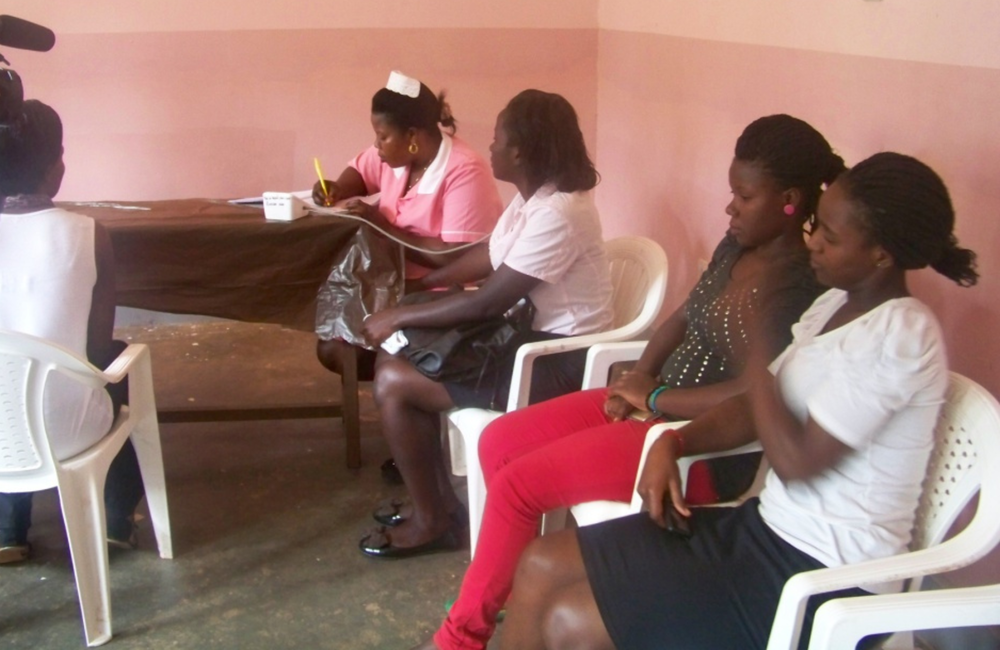
A South African study of more than 500,000 women has shown that women with HIV have approximately three times higher incidence of cervical cancer than women without HIV despite very high antiretroviral coverage. As reported in the International Journal of Cancer, women with HIV developed cervical cancer at a younger age than other women.
HIV contributes to the development of cervical cancer through immunosuppression, which reduces the ability of the immune system to clear cells infected with cancer-causing strains of human papillomavirus (HPV). HIV also promotes the expression of numerous proteins of cancer-causing strains of HPV.
Women living with HIV have a higher risk of acquiring HPV and of experiencing persistent infection with cancer-causing strains of HPV. Women with HIV also experience faster development of pre-cancerous changes in the cervix and faster development of cervical cancer.
Cervical cancer rates increase after the age of 40 in women in lower-income countries, but some studies have observed that women with HIV tend to develop cervical cancer around 10 years earlier than women without HIV. More than half of women diagnosed with cervical cancer in southern Africa are living with HIV and one study has estimated that 86% of cases of cervical cancer in women under 35 in southern Africa are attributable to HIV. However, despite these findings, there is a lack of information on age-specific rates of cervical cancer to guide screening policies.
Researchers from the University of Bern and the University of Cape Town carried out a retrospective analysis of the incidence of cervical precancerous cell changes (dysplasia) and cervical cancer in 517,312 women covered by a private medical insurance scheme in South Africa between 2011 and 2018. The study used reimbursement claims for inpatient and outpatient care to estimate the age-specific incidence of each condition in women with and without HIV.
Women with HIV were identified by having at least two different HIV-related indicators in the claims database, including HIV-related laboratory tests, antiretroviral therapy prescription or registration with the Aid for AIDS clinical management programme. Eight percent (38,739) of women were classified as living with HIV and 88% were taking antiretroviral treatment. The cohort had a median age of 37 years at baseline.
Follow-up (time at risk) began at the time of enrolment into the medical insurance scheme, or 18th birthday, or first HIV indicator, or January 2011, whichever came last.
During the follow-up period, 3556 women were diagnosed with moderate cervical dysplasia (31% were women with HIV). Almost half (46%) of women with moderate dysplasia were aged 25-34 and the risk of developing moderate dysplasia was 24% higher in this age group compared to women aged 35-44. The peak incidence of moderate dysplasia occurred at the age of 28 in women without HIV and 33 in women with HIV.
Severe dysplasia was diagnosed in 3417 women (30% were women with HIV). Incidence peaked at the age of 31 regardless of HIV status. Carcinoma in situ (700 cases, 29% were women with HIV), sometimes referred to as high-grade dysplasia in other studies as it is considered to be a non-invasive form of cancer, was diagnosed in 700 women. Incidence peaked at the age of 34 years.
Cervical cancer was diagnosed in 564 women (23% were living with HIV). Incidence reached a peak at 52 years and the risk of being diagnosed with cervical cancer rose with age, so that women over the age of 55 were approximately twice as likely to be diagnosed with cervical cancer compared to women aged 35-44.
Women with HIV had an approximately three times higher risk of developing cervical cancer or carcinoma in situ than women without HIV and approximately three-and-half times the risk of developing moderate or severe dysplasia. Women with HIV remained at higher risk of cervical precancer or cancer throughout the follow-up period despite improvements in rates of HIV diagnosis and greater uptake of antiretroviral therapy.
The study investigators say that more frequent screening for cervical abnormalities in women with HIV may have led to greater detection of these conditions, but they also note that another study found no difference in cervical screening rates according to HIV status in South African women.
Contrary to previous studies suggesting that women with HIV developed cervical precancer at younger ages than women without HIV, this study found no difference in the peak age for diagnosis. But the study found that the peak age of diagnosis of cervical cancer was seven years earlier in women with HIV than women without HIV (49 vs 56 years).
Regardless of HIV status, a history of genital warts or another sexually transmitted infection was significantly associated with an increased risk of being diagnosed with any form of dysplasia or cervical cancer.
The study investigators say that their results may underestimate the association between HIV and cervical precancer and cancer, as only 15% of women in South Africa are covered by health insurance. It is likely that screening rates for cervical cancer are lower in uninsured women using public health facilities and that cervical cancer rates are higher in the rest of the population.
Fernández Villalobos NV et al. Cervical precancer and cancer incidence among insured women with and without HIV in South Africa. International Journal of Cancer, published online 2 September 2023.
Full image credit: Students queue up for tests before accessing the Cervical Cancer Screening service. Image by CEHURD CEHURD. Available at www.flickr.com/photos/125285819@N05/15161780820 under a Creative Commons licence CC BY 2.0.
